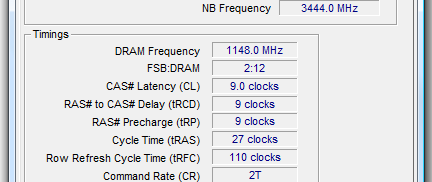Overclocking
The reason why you buy an Republic of Gamers motherboard, like the Maximus III Formula, is for overclocking. What does £180 buy you in terms of extra performance?A few hundred MHz it seems: we squeezed out a very tasty and reliable 4.4GHz overclock from our retail Core i7-870 test CPU, using a 22x multiplier with 200MHz baseclock at 1.5V CPU, 1.38V VTT, 2.0V PLL, 1.06V P55, 1.65V memory. The Kingston 2,133MHz memory easily ran in conjunction at 2,000MHz CL8.
In our testing, we found the Asus board was happier at a higher multiplier than higher base clock - whereas the Gigabyte UD4 and UD5s wouldn't overclock the CPU frequency quite so far, they were happier with a higher, 205MHz base clock, which directly affects the integrated memory controller.
Weirdly, we managed to achieve a 215MHz base clock with the same board when we reviewed it for Custom PC magazine, however this time around the board wouldn't budget past 212MHz if we wanted to boot into Windows. That's actually a little disappointing, considering it's not really any better than other motherboards and we've seen such vast improvements in extreme clocks from previous Maximus boards, however we do realise this is most likely a CPU limitation coming in to play.
The memory overhead was also a little disappointing - again, the Gigabyte boards were better for extreme memory speeds as we found the Maximus topped out at 2.3GHz at CL9, however the Gigabyte UD5 could push 2.47GHz from the same modules.
Overall we found a superb BIOS, and fantastic overclocker that was a little weak in some specific areas.
Power Consumption
At idle, with the EPU enabled and set to auto, it doesn't make much difference in power saving - that's not unusal compared to other motherboards of this type though. It's several watts better than the P7P55D Deluxe, and just a single watt more efficient than the MSI GD65, however none of them can still keep up with the sub-90W Gigabyte boards.
Under load something gluttonous happens on the Maximus III, because it draws ~20 per cent more juice than the nearest competitor, let alone 30 per cent more than the MSI. While we're not condoning excessive power consumption, if you're buying this board to throw the heavy juice through your CPU and typically load the system with a couple of high performance graphics cards, those will do far greater damage to your electricity bill.

MSI MPG Velox 100R Chassis Review
October 14 2021 | 15:04











Want to comment? Please log in.